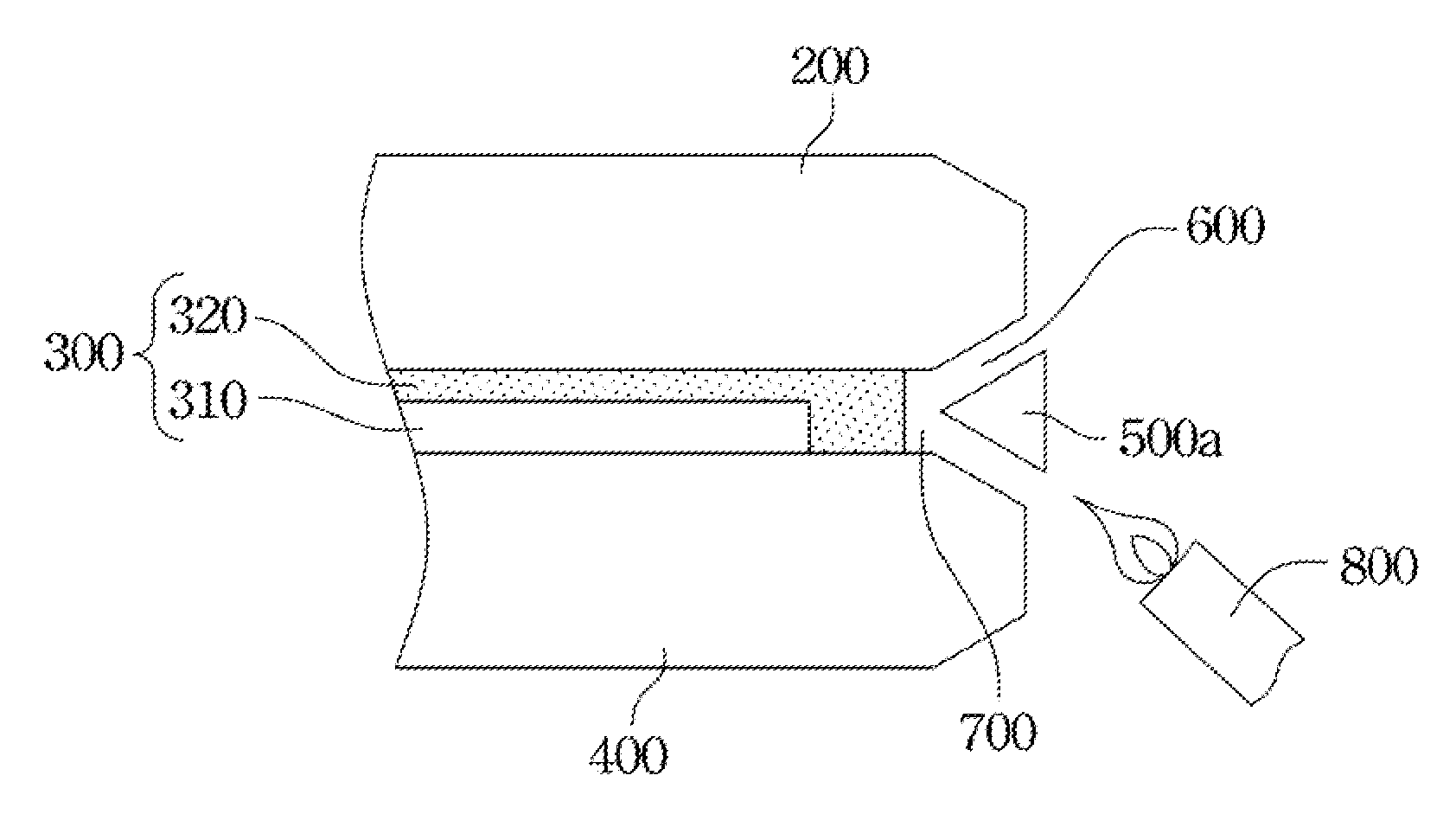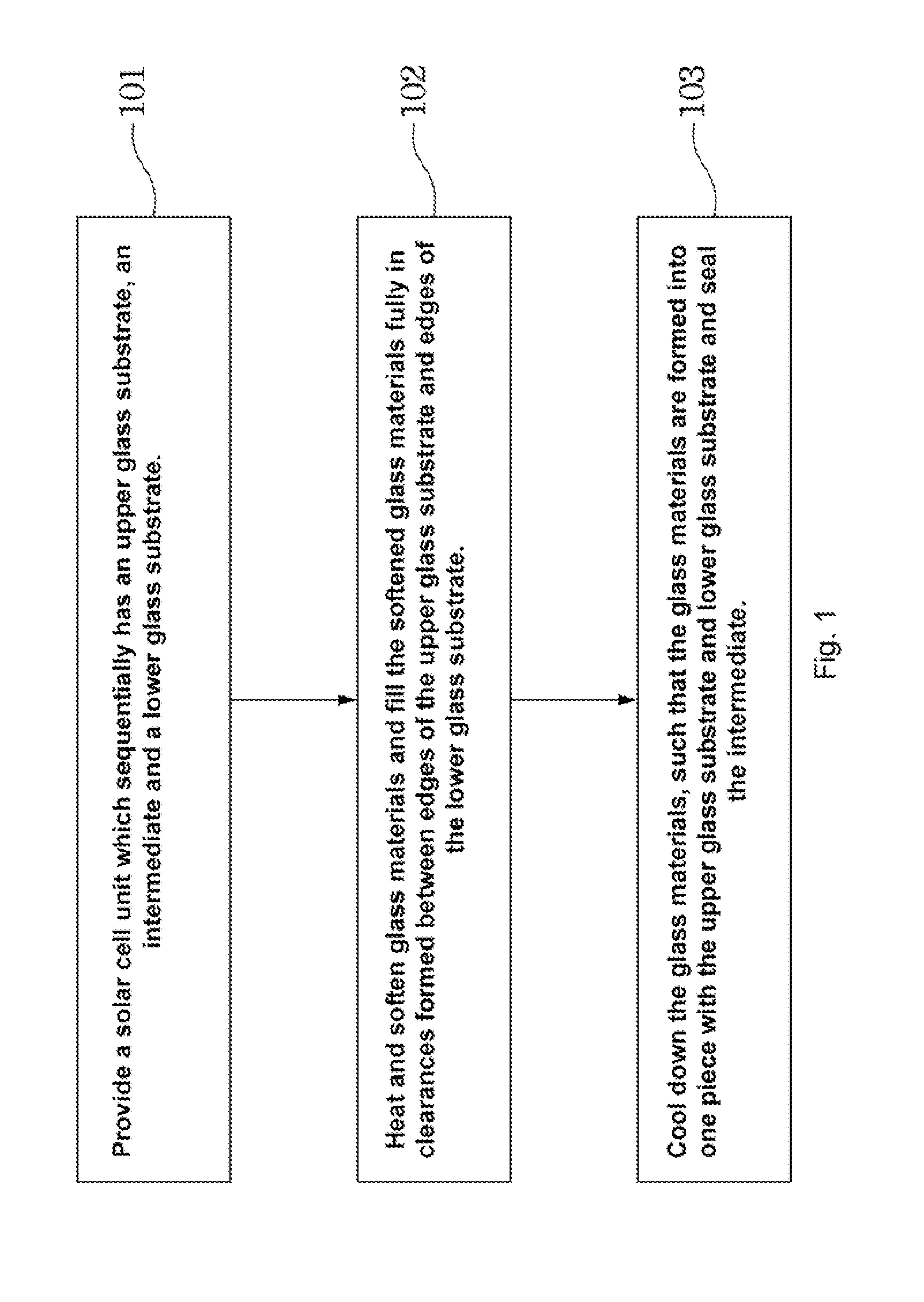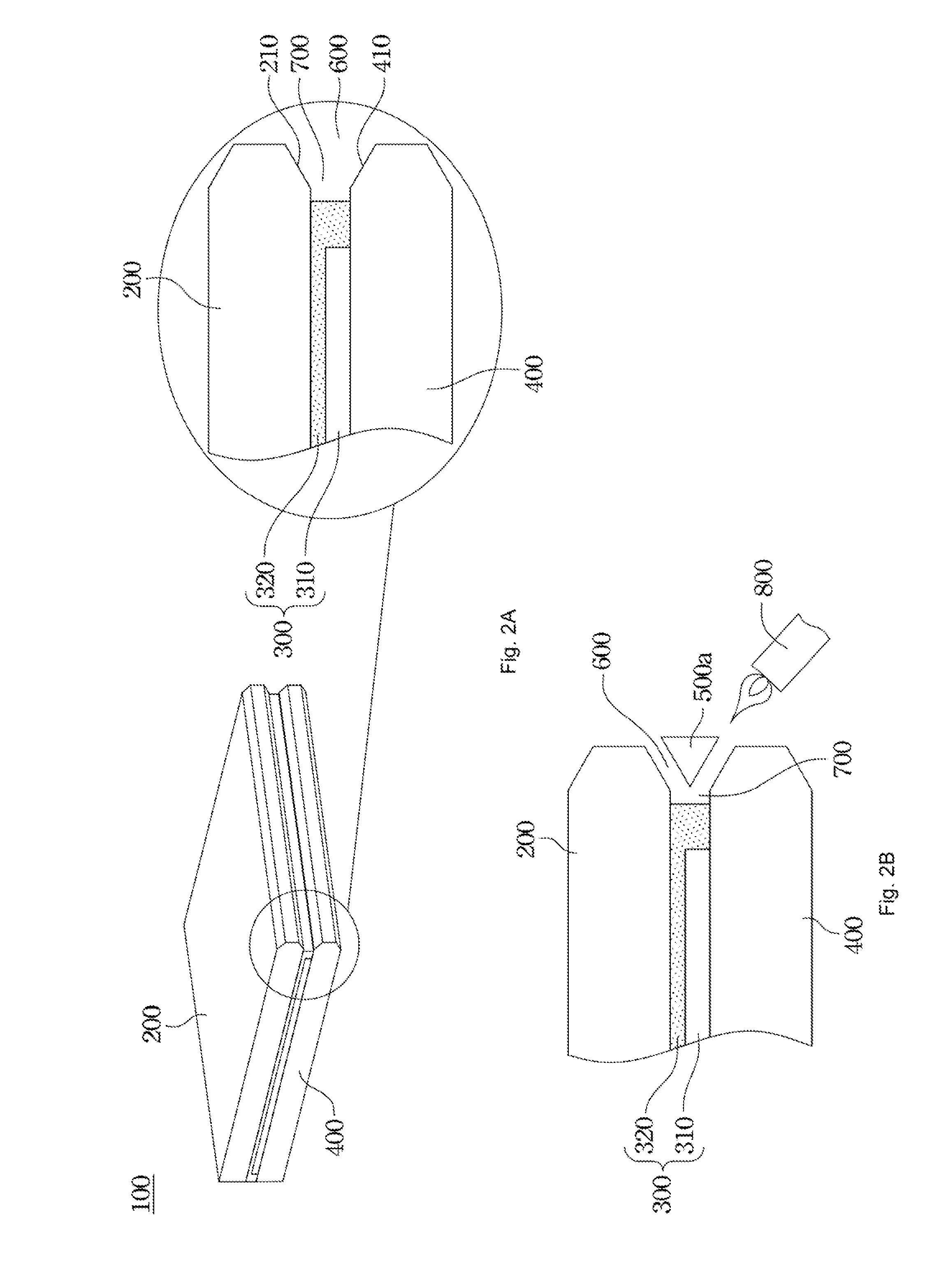Solar cell module and edge sealing method thereof
a solar cell module and edge sealing technology, applied in semiconductor devices, layered products, chemical instruments and processes, etc., can solve the problems of increasing the risk of damaging the solar cell module, increasing the volume of increasing the material coast, etc., to reduce the clearance, effectively preventing moisture from penetrating into the solar cell module, and improving the material moisture absorption problem
- Summary
- Abstract
- Description
- Claims
- Application Information
AI Technical Summary
Benefits of technology
Problems solved by technology
Method used
Image
Examples
Embodiment Construction
[0031]The present invention provides an edge sealing method of solar cell module and a solar cell module fabricated by using this method. According to the edge sealing method, a melted glass material is filled fully in the clearance at the edges of the solar cell module through which moisture is likely to penetrate, such that after being cooled down, the glass material may be joined with the glass substrates at two sides of the solar cell module into one piece, thus forming a glass container having a closed space. In this way, the edges of the solar cell module can be sealed to effectively prevent moisture from penetrating into the solar cell module and further greatly improve the moisture absorption problem of materials inside the solar cell module.
[0032]Referring to FIG. 1, FIG. 2A and FIG. 2B, FIG. 1 is a flow chart showing an edge sealing method of a solar cell module according to the present invention; FIG. 2A is a schematic view of a solar cell unit; and FIG. 2B is a schematic...
PUM
| Property | Measurement | Unit |
|---|---|---|
| Temperature | aaaaa | aaaaa |
Abstract
Description
Claims
Application Information
 Login to View More
Login to View More - R&D
- Intellectual Property
- Life Sciences
- Materials
- Tech Scout
- Unparalleled Data Quality
- Higher Quality Content
- 60% Fewer Hallucinations
Browse by: Latest US Patents, China's latest patents, Technical Efficacy Thesaurus, Application Domain, Technology Topic, Popular Technical Reports.
© 2025 PatSnap. All rights reserved.Legal|Privacy policy|Modern Slavery Act Transparency Statement|Sitemap|About US| Contact US: help@patsnap.com



